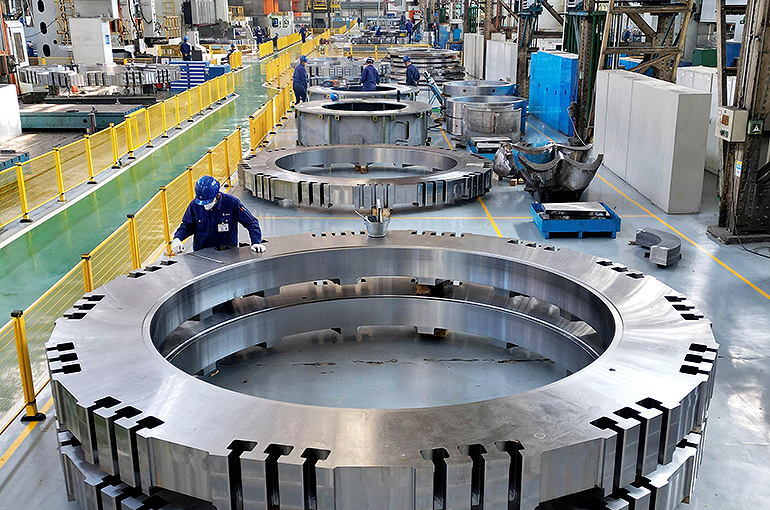 Industrial Gains Boost China’s Growth as Consumer Spending, Property Market Lag
Industrial Gains Boost China’s Growth as Consumer Spending, Property Market Lag(Yicai) Oct. 22 -- China's economy expanded 4.8 percent in the three months ended Sept. 30 from the same period a year earlier, slower than the 5.4 percent pace recorded in the first half. The result was largely in line with expectations and there were several encouraging signs, such as an uptick in industrial capacity utilization.
In the first three quarters, China’s gross domestic product grew 5.2 percent from a year ago, which is a relatively solid pace compared with global peers and is a good foundation for meeting the full-year target of around 5 percent.
Industrial capacity utilization improved from the previous quarter, especially in several key sectors, while industrial output in September rebounded strongly month-on-month, providing a notable boost to overall growth.
The industrial capacity utilization rate climbed 0.6 percentage point in the third quarter from the second quarter to 74.6 percent. The capacity utilization rates in the electrical machinery and automobile sectors improved significantly month-on-month, showing the positive impact of efforts to curb ‘involution,’ or excessive internal competition. Capacity usage also rose in the general equipment as well as the computer, communication and electronics sectors, reflecting stronger investment demand in emerging industries.
Based on September's industrial value-added, service output index and retail sales, the rough estimate of monthly real GDP growth was 4.91 percent. Industrial value-added for the month jumped 6.5 percent year on year, reflecting the typical autumn production peak. This rise was partly driven by a surge in export deliveries, with strong growth in the output of industrial robots, metal-cutting machines and automobiles.
However, the economy still faces some challenges. Consumer spending growth slowed sharply, the real estate market remains unstable and fixed-asset investment contracted further.
Per capita disposable income climbed 4.5 percent in the third quarter from a year earlier, while per capita consumption expanded 3.4 percent, both of which were significantly slower than in previous quarters. Retail sales of consumer goods slowed in September for the fourth consecutive month, with a seasonally adjusted monthly drop of 0.18 percent.
In the property sector, sales area and investment both continued to decline. The price of new homes dipped 0.4 percent in 70 medium-sized and large cities last month from the month before, and the decline is widening. Fixed-asset investment sank 6.8 percent, and manufacturing and infrastructure investment both fell at a faster rate.
The sharp contraction in fixed-asset investment may be the core issue on the demand side at the moment. Policymakers are already aware of this, and recently, new policy-based financial tools have been rolled out more rapidly. The central government has also allocated CNY500 billion (USD70.1 billion) to help local governments refinance debt and fund construction projects.
Whether these measures can effectively stabilize investment and drive a broader recovery in domestic demand will be crucial for determining the country’s economic performance in the fourth quarter.
The author Guo Lei is chief economist at GF Securities and a council member of the China Chief Economist Forum.
Editor: Kim Taylor